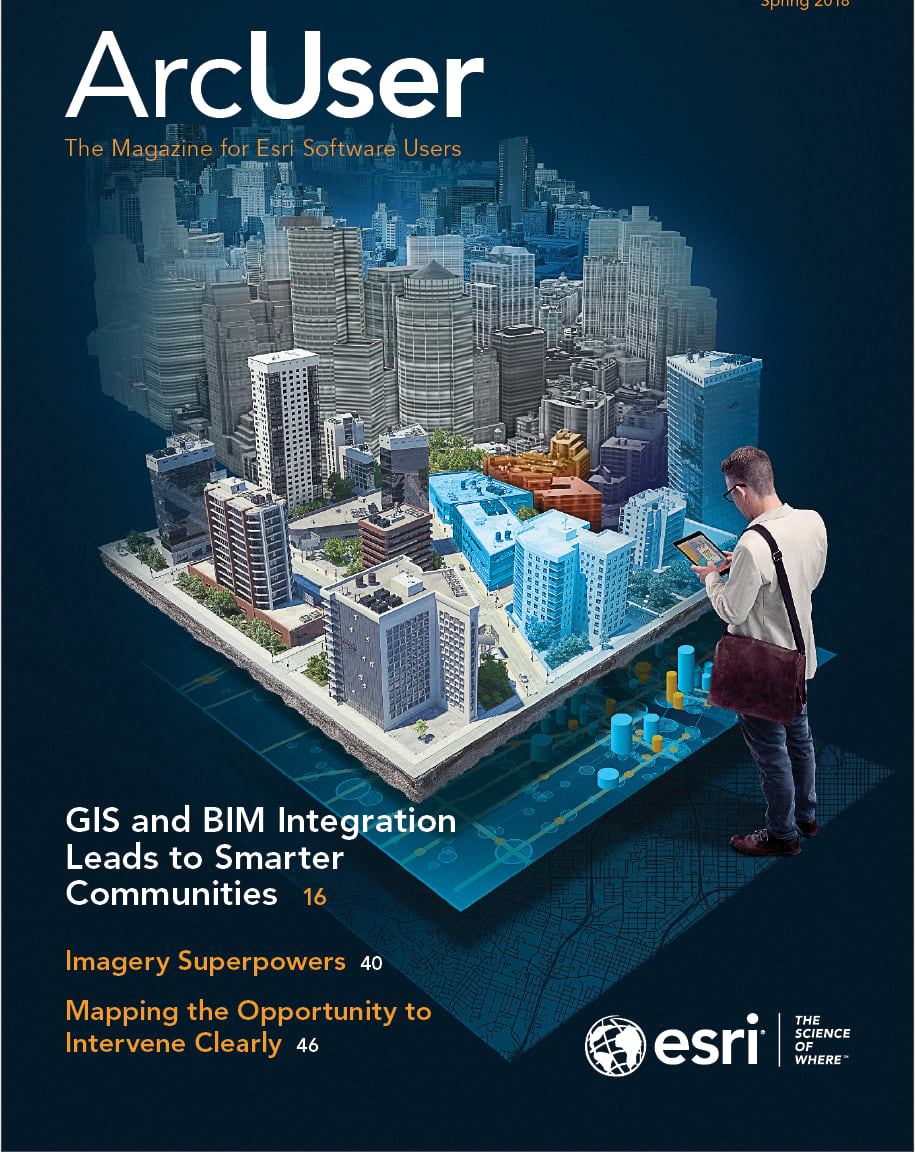Once a year, Palm Springs, California, becomes the center of the geospatial technology universe.
Esri hosts its annual Esri Partner Conference in the city’s convention center, immediately followed by the wildly popular Esri Developer Summit (DevSummit).
In March, more than 2,000 geospatial app developers, information technology (IT) managers, Esri partners, and others, packed workshops and the Plenary Session. They also watched a Keynote Address about artificial intelligence (AI) given by Joseph Sirosh, corporate vice president of the Artificial Intelligence and Research Group at Microsoft.
Esri’s ArcGIS program manager Jim McKinney said this year’s event attracted a record crowd. One of the attendees, Stu Rich, thought he knew why.
“I think what you are seeing is that Esri’s technology is maturing rapidly and becoming more accessible,” said Rich, the chief technology officer (CTO) of PenBay Solutions, an Esri partner. “And there is a rapidly growing group of developers that understand the value they can drive on top of that set of Esri’s capabilities. Their ability to enhance and configure and deploy really compelling solutions based on Esri’s technology is exciting. It’s amazing what can be done today, and that is certainly driving the growth [of the summit].”
Rich said that DevSummit workshops now delve into technology that integrates with GIS, going far beyond a narrow focus on traditional GIS. “You’ve got sessions here on remote sensing, raster analytics, machine learning, and artificial intelligence,” Rich said. “You’ve got such breadth [of session topics], that it attracts a very wide and diverse group of developers from across many, many business domains.”
The following attendees shared why they came to Palm Springs this year and what most interested them about this year’s conference. (Some comments were edited for clarity and brevity.)
Xin Chen
Systems and Programming Supervisor, South Coast Air Quality Management District (SCAQMD) from Diamond Bar, California

Why did you come to DevSummit?
SCAQMD assistant deputy executive officer Ron Moskowitz has placed a high priority on a project to increase our GIS capabilities. Our number one objective is to present air quality information to the public in a meaningful way. We monitor and calculate hourly air quality for the region, so that data has to get out.
During the last year, we have increased our presence on ArcGIS Online. For example, we migrated our air quality map to the cloud-based mapping platform. By leveraging the Esri cloud, we no longer have to worry about server capabilities. Esri takes care of everything such as scaling during periods of high demand. We have also completed the initial installation of our on-premises ArcGIS Enterprise system.
At the SCAQMD, we want to continue to leverage Esri’s capabilities. We are here to learn in depth about the application architecture and the development tools available. Esri also offers a whole suite of very powerful ready-to-use applications such as Workforce for ArcGIS, Collector for ArcGIS, and Survey123 for ArcGIS. We are here to learn about how to use these apps for field force automation, as well as public engagement.
Currently, we are trying to build a mobile application, and we are here to explore Esri’s mobile capabilities. It’s great to see this year’s DevSummit has a special focus on mobile—it’s exactly what we wanted to learn. Three of our staff are splitting up sessions trying to figure out what’s the best approach. We were also able to have an in-depth meeting with Eric Bader from Esri’s ArcGIS Runtime team, who helped a lot in that regard.
What are the cool things you’ve seen?
The point clustering capabilities in ArcGIS API for JavaScript demonstrated at the Plenary Session. Clustering helps to improve the visualization of large point datasets—common at AQMD. You can have a richer and more meaningful map with a faster response time. Immediately, we picked that up and said that’s something that helps us.
Jean-Yves Lauture
President and CTO, Eos Positioning Systems from Terrebonne, Quebec, Canada

Why did you come to DevSummit?
Can I say the weather first? The friendliness of all the Esri staff. You always feel good coming to an Esri event. Everybody feels welcome.
Eos Positioning Systems manufactures high-accuracy GNSS receivers compatible with iOS, Android, and Windows [devices] and compatible with all Esri mobile products like Collector for ArcGIS and Survey123 for ArcGIS. Esri is avant-garde—innovating always in the market—and they listen to their users. The testing, development, and support teams are extremely responsive to the public.
What are the cool things you’ve seen?
The Esri-Autodesk partnership to integrate BIM [building information model] and GIS. There was a big gap [between the two technologies] to be bridged, and that’s happening now.

Cody Barrett
Senior Designer/Developer, HNTB Corporation/Iowa Department of Transportation (Iowa DOT) from Ames, Iowa
Why did you come to DevSummit?
I’m an embedded consultant [from the infrastructure solution firm HNTB] for the Iowa DOT [Department of Transportation] GIS group. This is my first year at the Developer Summit. I currently assist in developing custom applications for internal clients. I’m interested in new functionality that is coming out, especially the ArcGIS API for Python. I think the [API] will be helpful for not only maintaining your ArcGIS Online organization [and] publishing content but also for data analytics and GIS analysis. At the Iowa DOT, we are always striving to improve processes and create dynamic solutions that fit the business needs of our internal customers.
What are the cool things you’ve seen?
One cool thing that came from [Esri Web GIS/Mapping product engineer] Kristian Ekenes. At the Plenary Session, he demonstrated clustering using ArcGIS Arcade. (Arcade is a lightweight and secure expression or scripting language written for use in the ArcGIS platform to customize visualization and labeling.) I like how it summarizes the cluster in the pop-up and you can browse through the features within each individual cluster. It’s a simple yet effective way to visualize data in a readable format.





